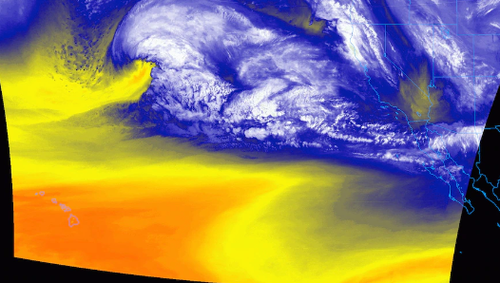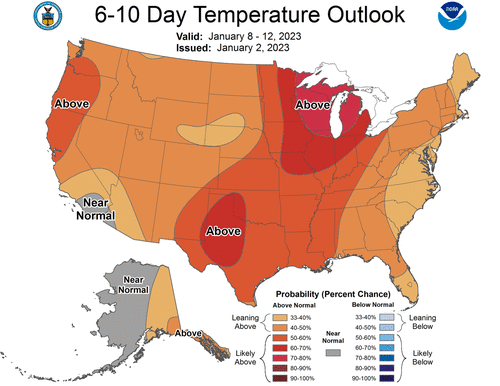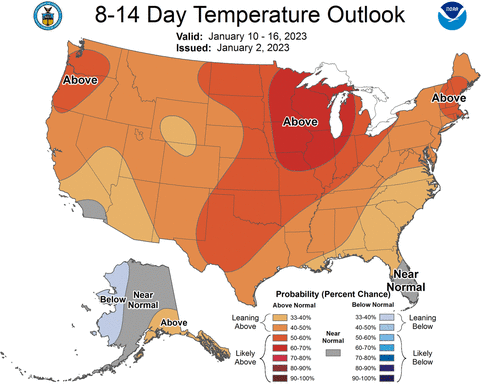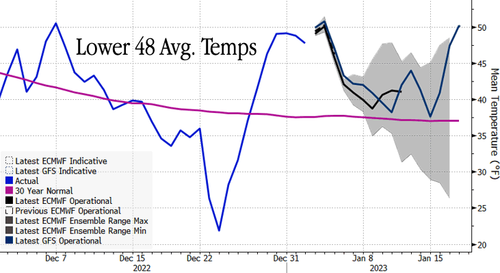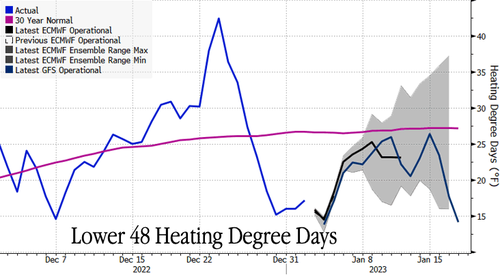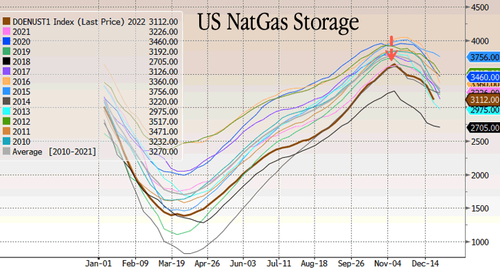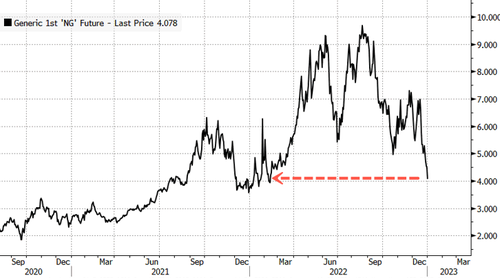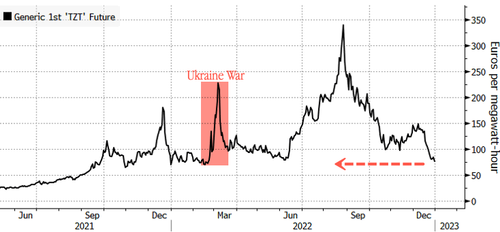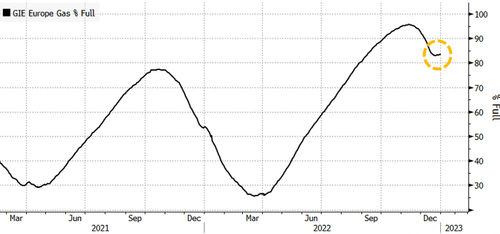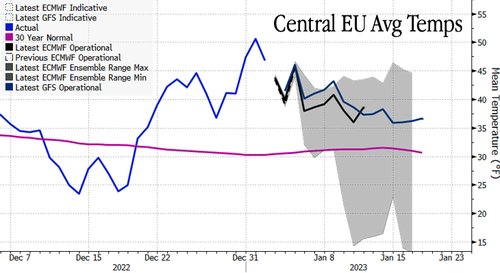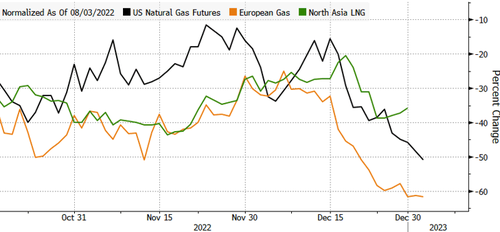Steve Bull's Blog, page 144
January 6, 2023
Are You Prepared for a Hard Landing?
 The New Year brings both optimism and hope. A chance to start fresh. To turn over a new leaf.
The New Year brings both optimism and hope. A chance to start fresh. To turn over a new leaf.
The sentiment is welcome. The outcome, however, can be a grave disappointment.
If you recall, 2022 was supposed to be a year of redemption and prosperity. After the ugly coronavirus fiasco, the economy was finally reopening. The general belief was that the resurgence of economic activity was going to bring a new boom and a new cycle of prosperity.
But then something unexpected happened. On the first day of market trading, January 3, 2022, the S&P 500 hit a closing peak of 4,796. Yesterday, just over a year later, the S&P 500 closed at 3,808. Down over 20 percent.
Over this duration, the yield on the 10-Year Treasury note spiked from 1.66 percent to 3.70 percent. In other words, Uncle Sam’s borrowing costs have more than doubled.
At the same time, transitory inflation proved to be enduring. And gross domestic product (GDP) went negative for the first two quarters of 2022.
What happened?
The calendar year may have started anew. But past actions remained. And there was plenty of wreckage from the past to be reconciled.
Much of this wreckage was created by the central planners at the U.S. Treasury Department and the Federal Reserve. Decades of money printing are not without consequences. And, unfortunately, the consequences dramatically impact your life and your livelihood.
The wreckage doesn’t magically disappear when the calendar hits January 1. Rather, it piles up from one year to the next like rotting refuse at a municipal landfill.
How will the central planners manipulate your livelihood in 2023? How will Federal Reserve monetary policy influence your job, investments, and discretionary income?
Here we scratch for answers…
Foolish Ideas
…click on the above link to read the rest…
January 5, 2023
How microplastics are infiltrating the food you eat
 Plastic pollution is one of the defining legacies of our modern way of life, but it is now so widespread it is even finding its way into fruit and vegetables as they grow.
Plastic pollution is one of the defining legacies of our modern way of life, but it is now so widespread it is even finding its way into fruit and vegetables as they grow.Microplastics have infiltrated every part of the planet. They have been found buried in Antarctic sea ice, within the guts of marine animals inhabiting the deepest ocean trenches, and in drinking water around the world. Plastic pollution has been found on beaches of remote, uninhabited islands and it shows up in sea water samples across the planet. One study estimated that there are around 24.4 trillion fragments of microplastics in the upper regions of the world’s oceans.
But they aren’t just ubiquitous in water – they are spread widely in soils on land too and can even end up in the food we eat. Unwittingly, we may be consuming tiny fragments of plastic with almost every bite we take.
In 2022, analysis by the Environmental Working Group, an environmental non-profit, found that sewage sludge has contaminated almost 20 million acres (80,937sq km) of US cropland with per- and polyfluoroalkyl substances (PFAS), often called “forever chemicals”, which are commonly found in plastic products and do not break down under normal environmental conditions.
Sewage sludge is the byproduct left behind after municipal wastewater is cleaned. As it is expensive to dispose of and rich in nutrients, sludge is commonly used as organic fertiliser in the US and Europe. In the latter, this is in part due to EU directives promoting a circular waste economy. An estimated 8-10 million tonnes of sewage sludge is produced in Europe each year, and roughly 40% of this is spread on farmland.
…click on the above link to read the rest…
January 4, 2023
Capsule Summaries of all Twitter Files Threads to Date, With Links and a Glossary
For those who haven’t been following, a compilation of one-paragraph summaries of all the Twitter Files threads by every reporter. With links and notes on key revelations

It’s January 4th, 2023, which means Twitter Files stories have been coming out for over a month. Because these are weedsy tales, and may be hard to follow if you haven’t from the beginning, I’ve written up capsule summaries of each of the threads by all of the Twitter Files reporters, and added links to the threads and accounts of each. At the end, in response to some readers (especially foreign ones) who’ve found some of the alphabet-soup government agency names confusing, I’ve included a brief glossary of terms to help as well.
In order, the Twitter Files threads:
Twitter Files Part 1: December 2, 2022, by @mtaibbiTWITTER AND THE HUNTER BIDEN LAPTOP STORY
Recounting the internal drama at Twitter surrounding the decision to block access to a New York Post exposé on Hunter Biden in October, 2020.
Key revelations: Twitter blocked the story on the basis of its “hacked materials” policy, but executives internally knew the decision was problematic. “Can we truthfully claim that this is part of the policy?” is how comms official Brandon Borrman put it. Also: when a Twitter contractor polls members of Congress about the decision, they hear Democratic members want more moderation, not less, and “the First Amendment isn’t absolute.”
1a. Twitter Files Supplemental, December 6, 2022, by @mtaibbi
THE “EXITING” OF TWITTER DEPUTY GENERAL COUNSEL JIM BAKER
A second round of Twitter Files releases was delayed, as new addition Bari Weiss discovers former FBI General Counsel and Twitter Deputy General Counsel Jim Baker was reviewing the first batches of Twitter Files documents, whose delivery to reporters had slowed.
…click on the above link to read the rest…
Stanford Scientists Warn That Civilization as We Know It Will End in “Next Few Decades”
“Humanity is very busily sitting on a limb that we’re sawing off.”
On New Year’s Day, several Stanford scientists joined CBS‘ Scott Pelley on the program “60 Minutes” to discuss the global mass extinction crisis. Spoiler: no one had any good news.Tony Barnosky, a Stanford biologist whose work involves using fossil records to map changes in ecosystems over time, told CBS that his work suggests that extinction rates today are moving at roughly 100 times the rate typically seen in Earth’s four-billion-year known history of supporting life.
According to Barnosky, such rapid population loss means that Earth is currently experiencing the worst mass extinction episode since the dinosaurs. And while Earth itself has repeatedly recovered from mass extinction events, the vast majority of the life existing on our planet at the time has not.
Unfortunately, that may well include us humans — or, at least, the trappings of our technological civilization.
“I and the vast majority of my colleagues think we’ve had it,” Barnosky’s Stanford colleague Paul Ehrlich, who also appeared on the show, told Pelley, “that the next few decades will be the end of the kind of civilization we’re used to.”
That grim reality, according to the researchers, means that even if humans manage to survive in some capacity, the wide-reaching impacts of mass extinction — which include habitat destruction, breakdowns in the natural food chain, soil infertility, and more — would cause modern human society to crumble.
“I would say it is too much to say that we’re killing the planet, because the planet’s gonna be fine,” said Barnosky. “What we’re doing is we’re killing our way of life.”
…click on the above link to read the rest…
The Global Financial System Is A Rube Goldberg Machine
 Much Of The Economy Is Like This Machine
Much Of The Economy Is Like This MachineMore than one economist, big wig CEO, and Fed watcher has alleged the problems haunting the financial system have very deep roots. These people often contend governments and central banks have not fully rectified the problems causing the great financial crisis of 2008. Instead, they have merely papered over our failures by printing money and flooding the system with liquidity.
Let’s just cut to the chase. Overall, the global financial system is not a well-designed efficient machine. Instead, it is a cobbled-together mess all glued together in a haphazard way to get the job done. To make matters worse, this system is greased by the greed of those who benefit from stealing a little from here and there. In the real world, things are usually not intentionally designed to be complicated but the reality is that they just are.
This means that more often than we would like to admit, systems thrown together with various parts or pieced together haphazardly are prone to be unreliable. When we try to explain events in terms of cause and effect the bigger picture has a way of getting lost. Often hidden away is the risk that results when complex poorly built systems become codependent upon other poorly built systems. Bestselling author Nassim Taleb who wrote, “The Black Swan” detailed in his book how when something is highly complicated highly improbable and unpredictable events can and do occur.
While pondering the conundrum that has become our current economy, I stumbled upon an analogy. Simply put, the global economy is like a Rube Goldberg machine. These are “goal-oriented” contraptions built in a ridiculously complicated way to perform what would normally be a simple task…
…click on the above link to read the rest…
‘Pineapple Express’ And Bomb Cyclone To Wallop California
A moisture conveyor belt of atmospheric rivers has unleashed near-record rainfall across the West Coast. Another, perhaps, more powerful atmospheric river and bomb cyclone are set to target California on Wednesday and Thursday, continuing ten days of heavy rains and snow for higher altitudes.
The National Weather Service office in the Bay Area warned about the imminent storm, calling it a “truly … brutal system … that needs to be taken seriously.”
“To put it simply, this will likely be one of the most impactful systems on a widespread scale that this meteorologist has seen in a long while,” an NWS meteorologist in San Francisco, adding, “the impacts will include widespread flooding, roads washing out, hillside collapsing, trees down (potentially full groves), widespread power outages, immediate disruption to commerce and the worst of all, likely loss of human life.”
The developing atmospheric river formed near Hawaii and, by Wednesday morning, will spread tropical moisture into California by a low-pressure system. This weather phenomenon is known as the “Pineapple Express.”
“Basically, an (atmospheric river) is a river in the sky of water vapor, and when it hits the mountains, (the moisture) is forced up over the mountains.
“That upward motion causes clouds and precipitation to form, and the faster the flow of air and water vapor is hitting the mountains, the faster the rain is falling, so you get more and more rain with the stronger ARs hitting the mountains,” Marty Ralph, Director of the Center for Western Weather and Water Extremes, told FOX Weather .
The heaviest rainbands are forecasted over parts of California Wednesday afternoon and evening into Thursday morning. NWS has already posted flood alerts across the Golden State.
Another 2-3 inches could be expected across the San Francisco area. Even the Los Angeles metro area could see 1-3 inches.
…click on the above link to read the rest…
January 3, 2023
Global NatGas Prices Sink As Warm Weather Spreads
US and European natural gas prices are sliding as warmer weather reduces demand for the heating fuel, and storage levels remain high. Risks of a global energy crisis are diminishing for now — well — that’s until the next cold blast strikes.
The polar vortex that sent much of the Lower 48 into a deep freeze at the end of 2022 ended last week. Now, much of the US will see warmer-than-normal temperatures through mid-Jan.
The National Oceanic and Atmospheric Administration’s latest 6-10 Day Temperature Outlook shows that nearly all Lower 48 will experience above-average weather.
NOAA’s 8-14 Day Temperature Outlook suggests the same.
Weather data via Bloomberg shows Lower 48 temperatures are expected to remain above a 30-year average through mid-month.
And this will reduce heating demand.
US NatGas storage entered into a drawing period in mid-Nov. and has been sliding since.
A weaker heating demand outlook has sent US NatGas prices down nearly 9% to $4.062 per million British thermal units on the New York Mercantile Exchange in early Tuesday trading. Prices are back to levels not seen since early February 2022.
Across the Atlantic, EU NatGas touched the lowest levels since the start of the Ukraine war.
“The risk of extreme market tightness that people were worried about before the winter started seems low now,” BloombergNEF’s Abhishek Rohatgi wrote.
Warmer weather in Europe has eased concerns about blackouts and rationing as stockpiles increase:
In fact, Europe has been able to add more gas into storage in the last few days amid a mix of curbed heating needs and typically lower consumption during the holiday season. -Bloomberg
EU NatGas storage increased last week.
Temperatures across Central EU are expected to hold above seasonal levels through at least the mid-month.
Sign of relief worldwide: NatGas prices slide in the US, EU, and Asia.
…click on the above link to read the rest…
How agriculture hastens species extinction
Mexican ecologist Gerardo Ceballos is among the world’s leading scientists on extinction. He laid out for us how dire the situation has become over the last century.
Gerardo Ceballos: There is only 2 percent of the big fishes that were in the oceans 50 years ago. Only 2 percent are living. We have lost around 70 percent of all the animals that were in the– in the planet. All the big animals, all the mammals, bird, 70 percent are gone since 1918. In Southeast Asia, you know, we have lost 90 percent of the tropical forest of Southeast Asia since 2000. So, our impact is so massive that we are becoming this meteorite that is impact the planet. The difference with the previous mass extinction is that they took tens of thousands, hundreds of thousand, even millions of years to happen. In this particular case, this is happening so fast, now in just two, three decades — even the species that are not affected directly by the extinction crisis won’t have enough time to evolve and survive this impact that we’re doing.
Every two years, the World Wildlife Fund produces a document called the “living planet report.” It’s a biennial report card that details the health of planet earth’s wildlife, showing the average decline of species populations since they were first monitored in 1970.
…click on the above link to read the rest…
Drivers could see gas prices surge to nearly $7 a gallon in some US states as refinery issues bite supply and Chinese demand bounces back, GasBuddy says
 Gas prices could top $4 a gallon in most major US states next year, GasBuddy says. (Photo by Steve Pfost/Newsday RM via Getty Images)Gas prices could surge toward $7 a gallon in some US states in 2023, according to GasBuddy.Cold snaps across the US and revived energy demand from China are the two key factors that could push up prices.“2023 is not going to be a cakewalk for motorists. It could be expensive,” said Patrick De Haan in a blogpost.Sign up for our newsletter to get the inside scoop on what traders are talking about — delivered daily to your inbox.Email addressBy clicking ‘Sign up’, you agree to receive marketing emails from Insider as well as other partner offers and accept our Terms of Service and Privacy Policy.
Gas prices could top $4 a gallon in most major US states next year, GasBuddy says. (Photo by Steve Pfost/Newsday RM via Getty Images)Gas prices could surge toward $7 a gallon in some US states in 2023, according to GasBuddy.Cold snaps across the US and revived energy demand from China are the two key factors that could push up prices.“2023 is not going to be a cakewalk for motorists. It could be expensive,” said Patrick De Haan in a blogpost.Sign up for our newsletter to get the inside scoop on what traders are talking about — delivered daily to your inbox.Email addressBy clicking ‘Sign up’, you agree to receive marketing emails from Insider as well as other partner offers and accept our Terms of Service and Privacy Policy.Brace for a spike in US gas prices next year due to refinery disruptions and amid renewed energy demand from China as the Asian nation reopens its economy, according to GasBuddy.
“2023 is not going to be a cakewalk for motorists. It could be expensive,” said Patrick De Haan, head of petroleum analysis at the firm, which tracks fuel costs, in its 2023 fuel outlook.
The national average price of gas at the pump could top around $4 a gallon in most major US cities as early as May next year, De Haan said, from $3.18 on Friday. Cities in the West Coast state of California, such as San Francisco and Los Angeles, could see gas prices approach nearly $7 a gallon in the summer of 2023, according to GasBuddy.
…click on the above link to read the rest…
January 2, 2023
China is destroying itself
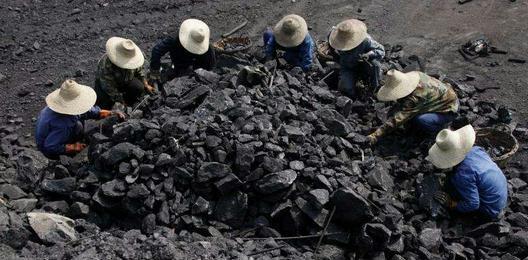
Preface. China has been destroying itself for many decades now. In Mao’s “great leap forward” about 35 to 50 million are estimated to have died from starvation from 1958 on, as you’ll read in my book review of” Shapiro J (2001) Mao’s War Against Nature: Politics and the Environment in Revolutionary China in this post. China continues to destroy itself by leveling mountains for more flat land, eroding topsoil, creating land and air pollution, destroying forests and more (Li 2014).
Other nations are wreaking environmental damage on themselves as well for the Almighty Dollar, but China is the “winner”. No other nation can compete. China controls about 63% of rare earth rare metals, and 90% of the supply chain, from extraction, processing separation, and refining, to manufactured goods. If new mines were built in other nations to lessen dependence, it would take about 15 years to construct one, and most of the production would probably be sold to China for processing and assembly into parts for products made in china (GAO 2010; AI 2019; Hui 2020).
But why compete? Let China monopolize the second most polluting industry on earth. Mining spews out acid rain, wastewater, and heavy metals onto land, water, and air (PEBI 2016). One-fifth of China’s arable land is polluted from mining and industry (BBC 2014). Mining the materials needed for renewable energy potentially affects 50 million square kilometers, 37% of Earth’s land (minus Antarctica), with a third of this land overlapping key biodiversity areas, wilderness, or protected areas. If mined, that would drive biodiversity loss, harm (rain) forests, and poison ecosystems (Kleijn et al. 2011; Hickel 2019; Sonter et al. 2020).
Renewable energy is anything but clean and green. And quite a Pyrrhic victory for China!
***
Li, P., et al. June 5, 2014. Accelerate research on land creation. China’s campaign to bulldoze mountains to build cities needs expertise to avert geoengineering problems. Nature 510: 29-31.
…click on the above link to read the rest…

